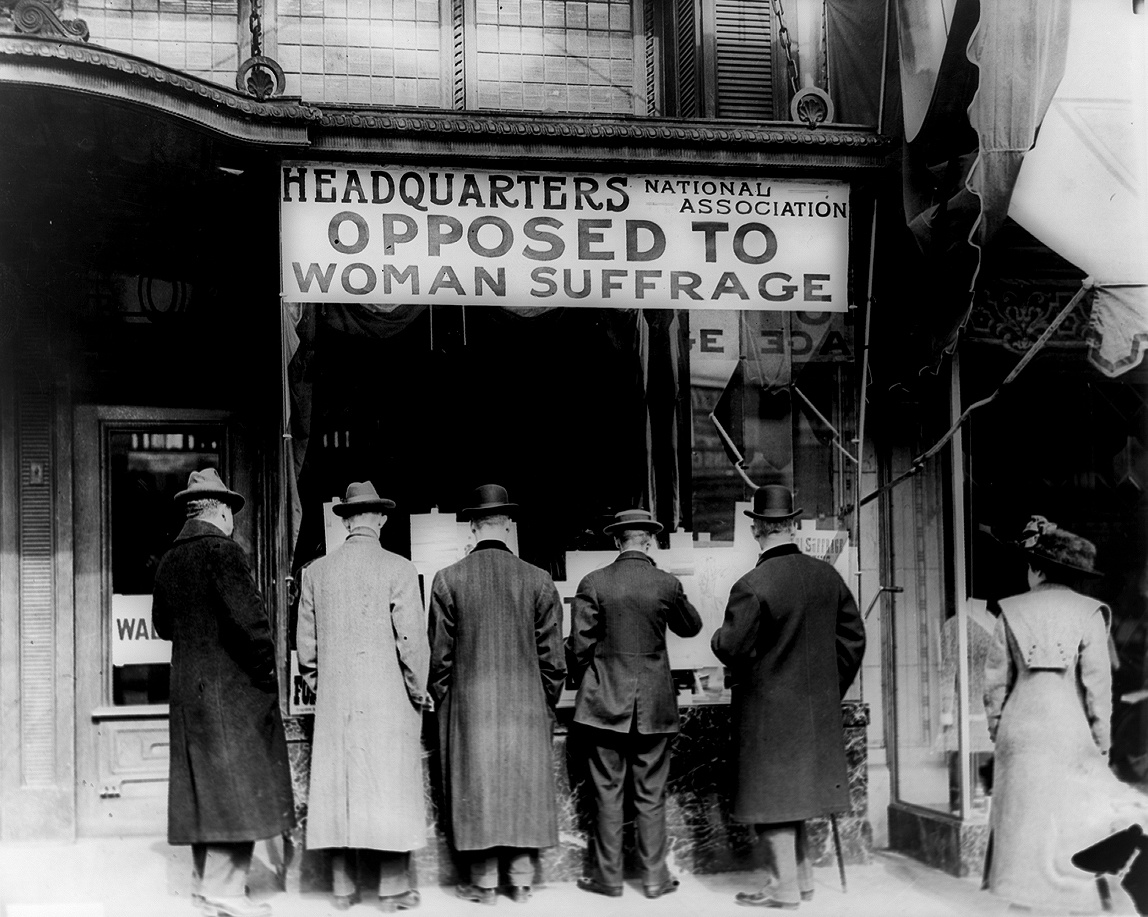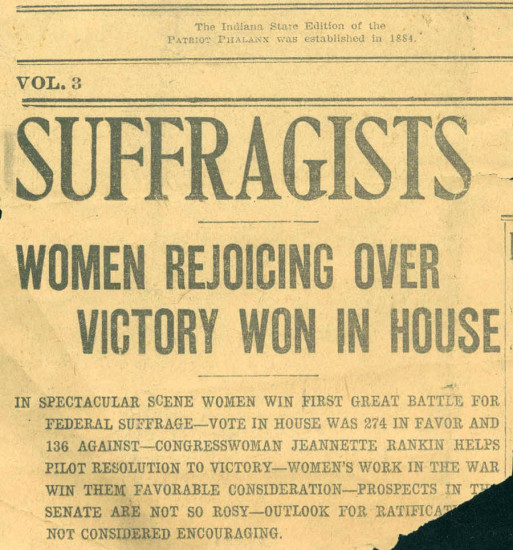
Tens of thousands of women participated in the March on Washington on Aug. 28, 1963. But none of the female civil rights leaders marched in the procession with Dr. King, nor were any of them invited to speak to the enormous crowd.
Instead, these women were asked to march on an adjacent street with the wives of the male leaders and to stay in the background.
Background:

On Election Day in 1920, millions of American women exercised their right to vote for the first time. It took activists and reformers nearly 100 years to win that right, and the campaign was not easy: Disagreements over strategy threatened to cripple the movement more than once. But on August 26, 1920, the 19th Amendment to the Constitution was finally ratified, enfranchising all American women and declaring for the first time that they, like men, deserve all the rights and responsibilities of citizenship.

THE ABOLITIONISTS AND THE SUFFRAGISTS
The campaign for women’s suffrage began in earnest in the decades before the Civil War. During the 1820s and 30s, most states had extended the right to vote to all white men, regardless of how much money or property they had.

In 1848, a group of abolitionist activists–mostly women, but some men–gathered in Seneca Falls, New York to discuss the problem of women’s rights. Most of the delegates agreed: American women were independent individuals who deserved their own political identities. “We hold these truths to be self-evident,” proclaimed the Declaration of Sentiments that the delegates produced, “that all men and women are created equal, that they are endowed by their creator with certain inalienable rights, that among these are life, liberty, and the pursuit of happiness.” What this meant, among other things, was that they believed women should have the right to vote.

The small role allowed female civil rights leaders in the activities of the 1960's Civil Rights Movement was the exact opposite of the central role these women played in planning the strategies, tactics and actions of the movement — including the march itself!
In fact, many of the most iconic campaigns of the civil rights movement were coordinated by women, including nonviolent sit-ins at segregated lunch counters, forced integration of Central High School by the Little Rock Nine, and the voter registration drives of 1964's Freedom Summer.
The first wave of the women's feminist movement started in the 19th and early 20th century with leaders such as Susan B. Anthony and Elizabeth Cady Stanton fighting for legal rights for women such as the ability to vote and own property. The second wave of the women's movement, led by women such as Betty Friedan and Gloria Steinem, occurred in the 1960s and 70s and attempted to combat further social and political inequalities.
One of the least recognized stories of the Civil Rights Movement is the role of women. This is true despite the fact that women were responsible for many of the achievements of the Movement. They developed strategies, marched in demonstrations, attended mass meetings, registered voters, taught in freedom schools, wrote searing critiques of societal structures, organized boycotts, and risked their lives.
Watch this 3.50 minute video on the history of women's suffrage.
This is a 5 minute video from Iron Jawed Angels (a modern movie made about Women's Suffrage) that depicts the Parade in Washington.
Look through this slideshow and read the text below each picture. There are 11 photos.
Tell us, on the Blog, something that you learned.
Here is the website link for your
Women’s Suffrage Fact Sheet.
Here is the website link for your
Women’s Suffrage Fact Sheet.
Something I learned, not extremely factual but sentimental to me, is that if anyone wants something, you have to work for it. These woman were such good representations. As we saw throughout the discrimination of color and women, these people were incredibly brave and throughout all the persecution they had faced, they did not give up. It's sad to think we live in a world that makes us fight in order to be treated properly.
ReplyDeleteFactually, I learned that when the president had first arrived in America, barely anyone was there to greet him. This was due to everyone either being in the woman's march, or being outlookers on it. This surprised me.
I didn't know that one in twenty of the marchers were men. If there were 10,000 marchers, there were only about 500 men altogether.
ReplyDeleteI learned that police just let people run out and ruin the parade. I also learned that they were arrested for protesting and had to be force fed.
ReplyDeletei thought that when they did the parade that nothing was going to happen then when i saw all the men trying too ripe the rope and stuff i was pretty surprised.
ReplyDeletei thought that when they did the parade that nothing was going to happen then when i saw all the men trying too ripe the rope and stuff i was pretty surprised.
ReplyDeleteI did not know that some of the women who were sent to prison went on hunger strikes, having to be force-fed
ReplyDeleteI did not know the African-American women joined the parade. I also did not know that 200 marchers were injured.
ReplyDeleteI learned from one of the pictures that picketers outside the White House also wrote in chalk on the sidewalks. I learned that they were sometimes arrested and put in prison, and that some followed a British suffragette tactic which is to go on a hunger strike, and like in Britain, be force-fed eventually.
ReplyDeleteI learned that five to eight thousand suffragists marched from the U.S Capitol to the White House. That's a lot of women!
ReplyDeleteI didn't know that the discrimination of women was global. Just because they are women doesn't mean they don't work hard to maintain their jobs.
ReplyDeleteI learned how they were still so different from men politically even after the 19th amendment (I think it was). It's like the African Americans and civil rights, the law can change but minds have to adjust to the change. SOME of the men were ignorant and believed women were just objects but the law said otherwise. It's sad that those men thought it was ok to do that to them.
ReplyDeleteI learned that getting women's rights took over 100 years to accomplish.
ReplyDeleteI didn't know that the women who participated in the March on Washington were not invited to speak! I figured at least one might have! :(
ReplyDelete